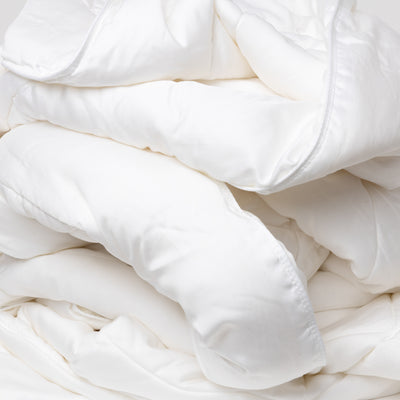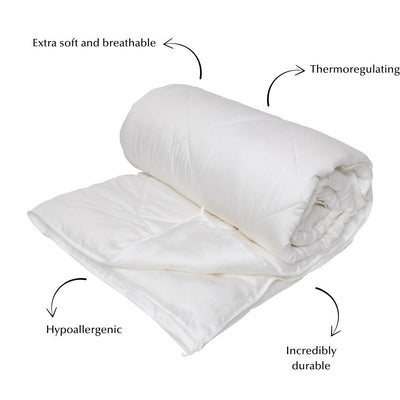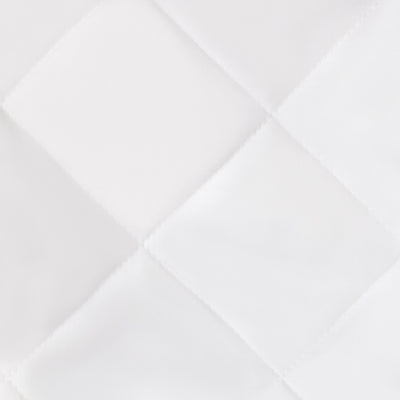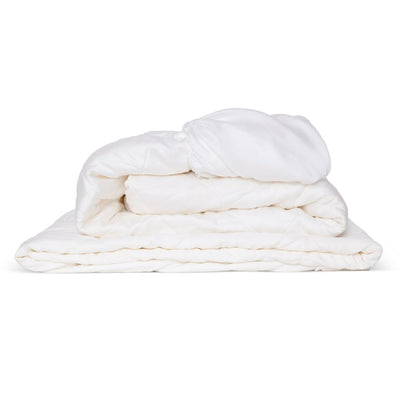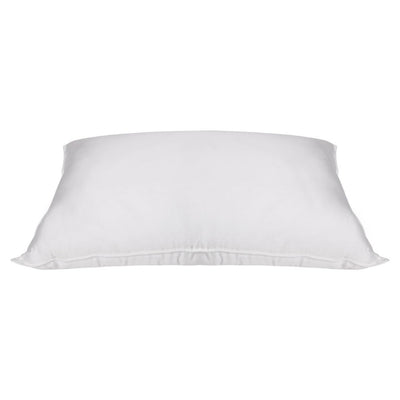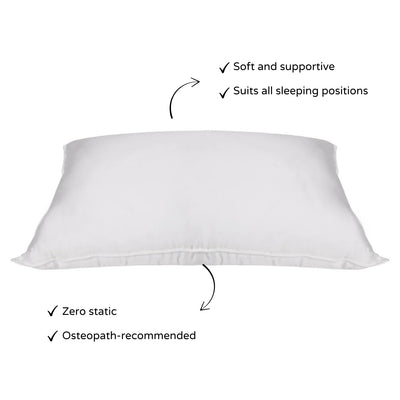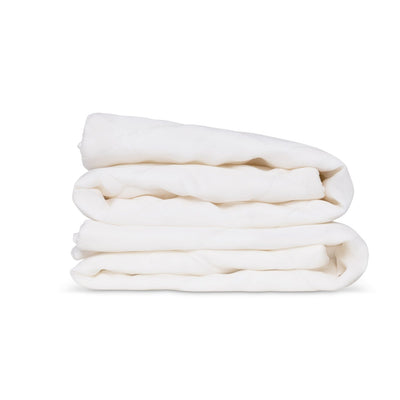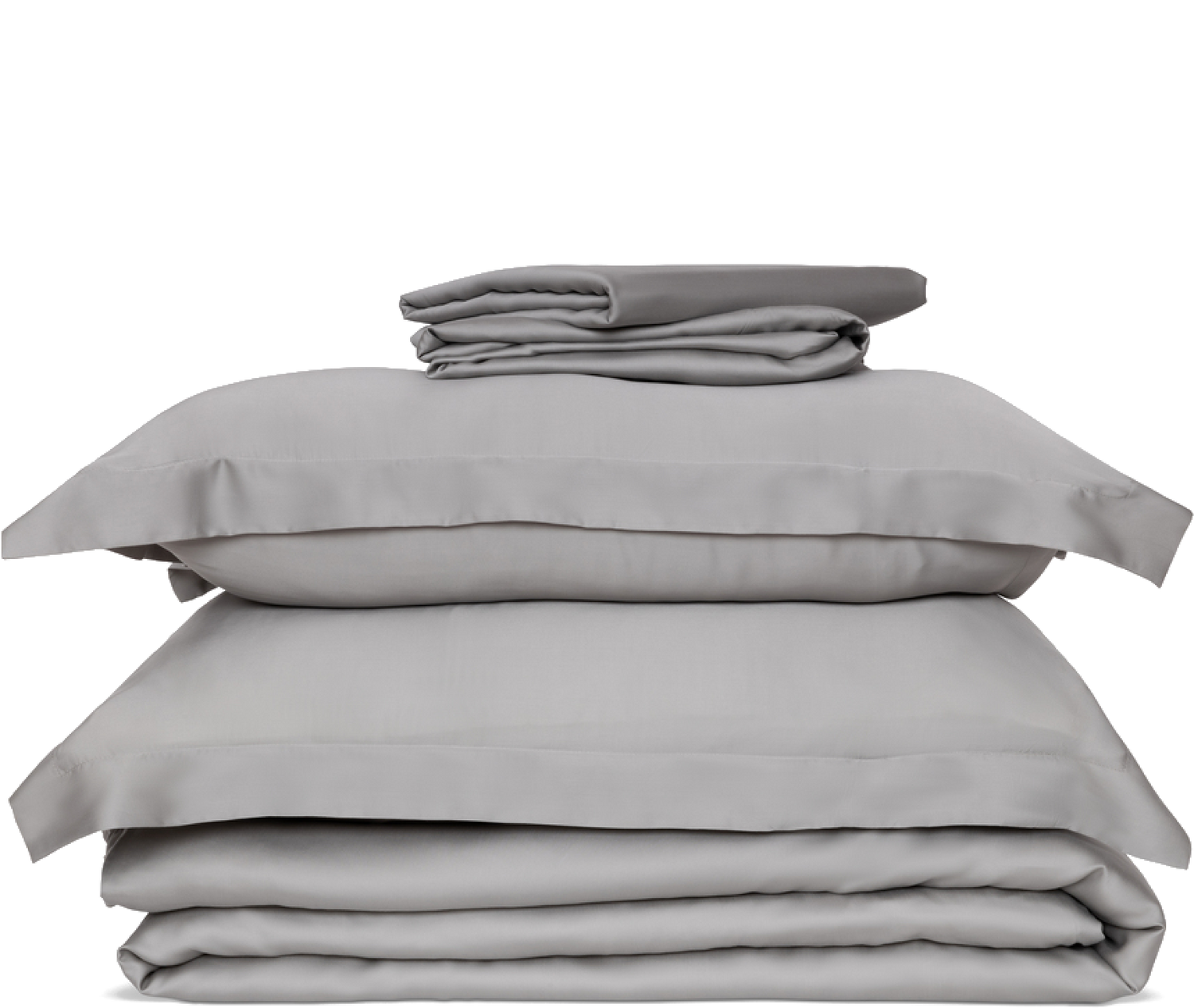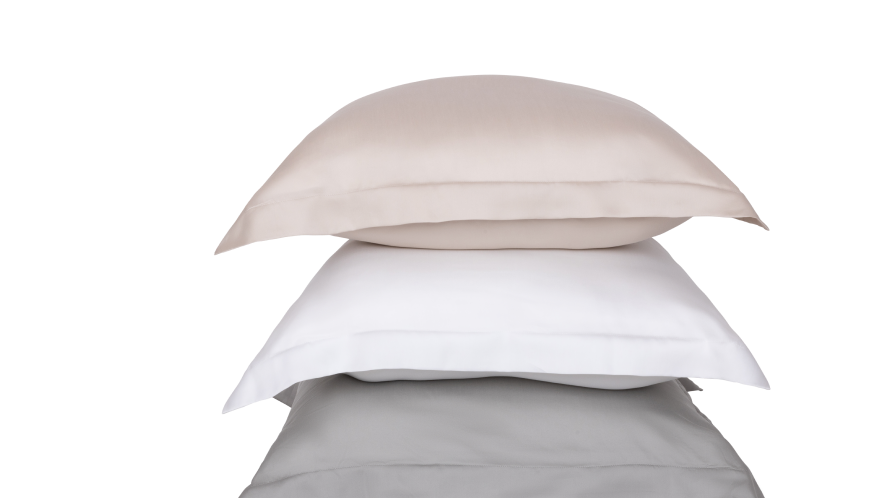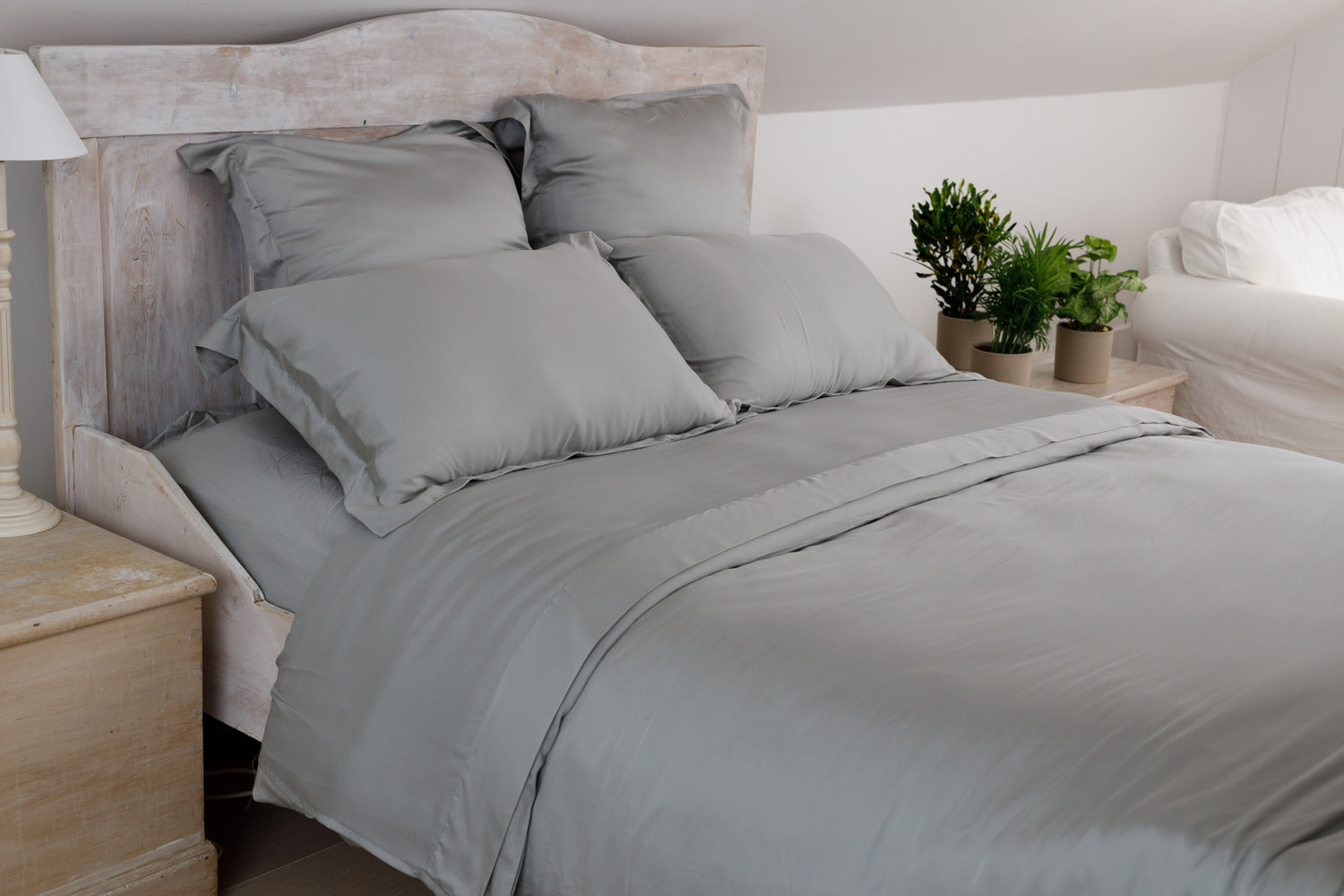Bamboo bedding has grown in popularity in recent years, as a sustainable and ethical alternative to silk. But if you’re new to bamboo, you might have come across two different terms: rayon and viscose. However, the differences between the two aren’t always made clear…
In this article, we’ve explored the differences between bamboo viscose vs rayon, including identifying the most environmentally friendly type, to help you make eco bedding choices.
Bamboo viscose vs rayon: what’s the difference?
Bamboo has rightly earned a reputation as being one of the softest and most luxurious types of bedding available - but not all bamboo sheets, duvet covers, and pillowcases are the same. In fact, there are two main types of bamboo bedding: bamboo rayon and bamboo viscose.
The two are sometimes used interchangeably, because of the similarities in performance, appearance, and touch, but it’s important to identify the differences so you can distinguish between them.
Essentially, while both are made using the self-sustaining bamboo plant, the variation between viscose vs rayon lies in the manufacturing methods – specifically, each uses different solvents and chemicals during production.
If you’re interested in learning more about bamboo bedding, we’ve gone into further detail about the process of rayon vs viscose below.
What is bamboo rayon?
Firstly, it’s important to highlight that ‘rayon fabrics’ don’t always refer to those made from bamboo, so seeing ‘rayon’ on a label doesn’t in itself mean you’re buying a bamboo product.
Instead, rayon is a general term used for any fabric fibres made using the cellulose from plants and trees (i.e., bamboo, eucalyptus, cotton). With this in mind, only if you see ‘rayon bamboo’ or ‘bamboo rayon’ on the label can be sure it’s made from bamboo fibres. Rayon is also in the same family of fabrics as ‘lyocell’ – sometimes known as Tencel – which uses non-toxic chemicals in production.
In terms of its history, rayon fabrics were originally invented as an affordable alternative to silk, and it’s remained a relatively close-match to this day - even being described as ‘artificial silk’ by many.
How is bamboo rayon made?
As we’ve touched on, bamboo rayon fibres are made using bamboo cellulose. The rayon/lyocell production process involves:
- Finely breaking down the bamboo, before crushing it to produce a pulp.
- Washing the pulp using non-toxic chemicals and leaving it out to dry (it’s important to allow plenty of time at this stage).
- Breaking up the dry sheets. These are then exposed to high pressure and combined with amine oxide (a biodegradable substance that’s widely used and doesn’t pose any toxic threat to humans), to dissolve the cellulose into a liquid.
- The cellulose is then filtered and forced through a spinneret to form long fibres.
- The fibres are set in a vat of amine oxide, before being washed.
- The washed fibres are then spun and woven into fabric, which can be used to produce soft bedding.
At the end of production, dyes and colourants can finally be added. At Ethical Bedding, we also only trade with manufacturers who operate using a closed loop system (whereby almost 100% of chemicals are recycled and reused), to ensure all bedding is completely sustainable.
Structure of bamboo rayon
For fabric to be genuinely regarded as bamboo rayon, it needs to be constructed using 100% bamboo fibres.
Unfortunately, on the market, there are lots of products that claim to be rayon bamboo that might actually contain traces of other textiles – i.e., including 5% spandex for elasticity - so it’s important to pay close attention to the fine details.
Of course, there’s absolutely nothing wrong with combining the properties of rayon and other materials – as long as it’s clearly stated on the packaging!
Bamboo rayon vs other fabrics
Rayon bamboo comes with various important advantages, including being silky soft to touch, naturally hypoallergenic and temperature regulating, and eco-friendly.
In addition, during rayon fabric production, almost 99% of solvents and water are recovered to be reused in future manufacturing operations (a closed-loop system). This means the chemicals don’t infiltrate the earth and no water is wasted, and any waste that isn’t reused is benign and non-impactful.
In fact, at Ethical Bedding, we pride ourselves on only using fabrics and materials that are sourced from sustainable and renewable environments. And, thanks to our unique closed loop process, each bedding item is manufactured using 95% less water and 30% less energy than cotton equivalents – while also being 100% carbon neutral.
What is bamboo viscose?
As is the case with rayon, viscose fabric doesn’t necessarily always refer to bamboo, so seeing ‘viscose’ on its own doesn’t mean you’re buying a bamboo product.
However, anything labelled ‘bamboo viscose’ or ‘viscose bamboo’ should, in theory, be 100% bamboo.
Bamboo viscose bedding is luxurious and soft, just like lyocell, and is of the same quality as silk or Egyptian cotton. The main difference between bamboo viscose vs rayon, however, is the chemicals used in production, which we’ve discussed in more detail below.
How is bamboo viscose made?
Bamboo viscose production follows a similar method to that of rayon. However, there are typically more chemicals involved – and those that are used can sometimes be toxic or irritant. On top of this, unfortunately, the viscose bamboo manufacturing process is rarely closed loop.
- To extract the cellulose, the bamboo first has to be crushed and soaked in a chemical solution.
- Once the cellulose has been extracted, it’s pressed to remove the chemicals (this removes any potentially irritating or toxic traces). It is then left to dry for around 24 hours.
- The bamboo cellulose is mixed with liquid carbon disulfide to turn the product into a gel. The remaining carbon disulfide will evaporate.
- Diluted sodium hydroxide is then added, to dissolve the solution a little, before being forced through a nozzle into diluted sulfuric acid.
- The final product is a hardened fibre that can effortlessly be spun into soft and luxurious yarns.
Is bamboo viscose sustainable?
Due to it being made using 100% bamboo fibres, bamboo viscose can typically be considered sustainable. For example, at the end of bamboo viscose bedding’s life, it can be recycled, and it will biodegrade over time. This makes it a more eco option than synthetic textiles like polyester.
However, the production process isn’t always environmentally friendly, and so it can’t necessarily be considered an eco-product.
Is bamboo viscose toxic?
There’s a lot of discourse around whether bamboo viscose is toxic or an irritant, so we thought we’d contribute to the discussion and settle any confusion.
The bamboo tree in itself isn’t toxic - bamboo bedding is actually incredibly soft and soothing – but when it comes to viscose fabric, the irritation depends on your skin sensitivity and whether you already suffer from dermatological conditions.
This is because viscose bedding manufacturers use various chemicals during production (such as sodium hydrochloride and carbon disulfide). And, though they might not necessarily be overtly present in the final bedding item, there’s likely to be traces.
So, in short – if you already experience sensitive skin and are prone to developing allergies, it’s probably best to avoid viscose fabric, and instead opt for lyocell or rayon!
Final thoughts and next steps
When buying sustainable bedding, the most important thing to be aware of is the fact that, unfortunately, not all products that claim to be eco-friendly actually are, and greenwashing is far too common.
So, if you’re environmentally conscious, make sure to read the package details carefully and, where available, check manufacturer and brand reviews, to make sure you’re buying from a reputable supplier. With that in mind, if you’re feeling inspired, why not explore our full range of bedding bestsellers, or discover even more useful insight over on the Ethical Bedding blog.
